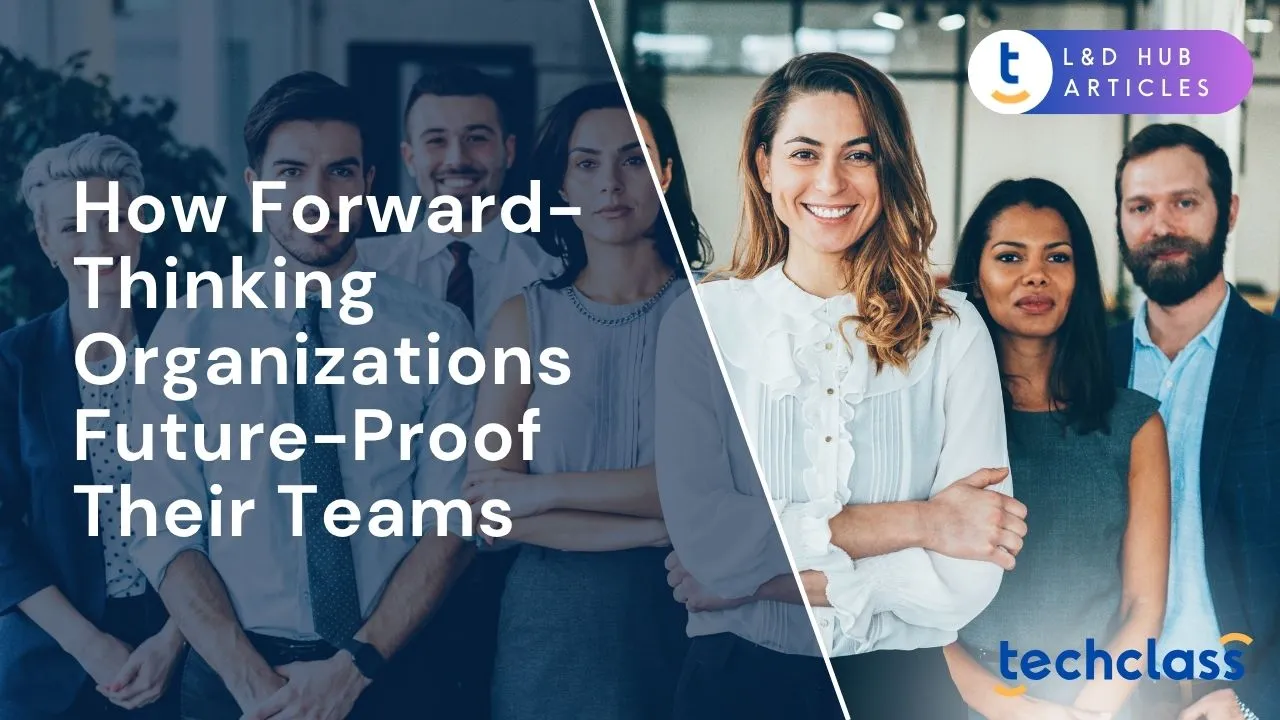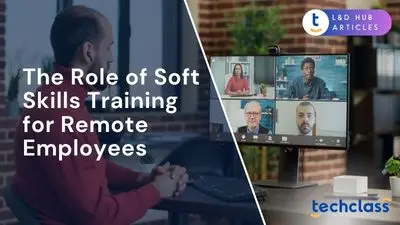
Change is the only constant in today’s business world. Technological breakthroughs, shifting market conditions, and evolving employee expectations are coming faster than ever. Organizations that future-proof their teams – ensuring employees are adaptable, skilled, and ready for tomorrow, gain a critical edge. Forward-thinking companies recognize that clinging to “the way we’ve always done it” can leave them behind. Instead, they cultivate cultures and strategies that enable their people to thrive amid uncertainty and disruption. In this article, we’ll explore what it means to future-proof a team and the key practices that help organizations stay ahead of the curve.
A future-ready organization starts with its culture. Trust and adaptability are the bedrock of teams that can navigate change. When employees trust their leaders and each other, they communicate openly and are willing to take initiative, which is vital in a fast-changing environment. Studies have found that high-trust teams are significantly more engaged and productive than low-trust ones. In fact, research by neuroscientist Paul Zak found that people at high-trust companies report 50% higher productivity and 76% more engagement than those at low-trust workplaces. Forward-thinking leaders actively build this trust by being transparent, keeping their promises, and encouraging employees to voice ideas and concerns without fear.
Encouraging a speak-up culture is a hallmark of innovative organizations. Frontline employees often spot emerging problems and opportunities first. Companies like EMC and Intuit have tapped into this by hosting internal innovation contests and platforms where any team member can propose solutions or new product ideas. When workers feel heard and empowered, it creates a sense of ownership that makes the whole organization more resilient. “Create a culture of trust and encourage employees to speak up,” advises futurist Scott Steinberg, noting that providing channels for employees’ insights and then acting on them helps firms stay in tune with fast-changing trends.
Critically, an adaptive culture also means employees aren’t punished for smart risks or small failures. Psychological safety, the feeling that you won’t be blamed or ridiculed for making a mistake, allows teams to experiment and learn. Forward-thinking companies foster this safety so that when market conditions shift or new technology arrives, employees are less resistant to change. As one HR expert put it, “Trust isn’t a ‘nice-to-have’ – it’s a strategic imperative for navigating disruption.” In practical terms, this might mean celebrating lessons learned from a project that didn’t meet its goal, rather than scolding the team. It sends a clear message: adaptability and learning matter more than always being right.
Finally, adaptability in culture is boosted by purpose and connection. Employees handle change better when they understand why it’s happening and feel connected to a larger mission. According to a recent Gallup workplace report, employee engagement in the U.S. sank to an 11-year low in early 2024 – but some organizations bucked the trend by intentionally strengthening their cultures. These top companies (across various industries) averaged about 70% employee engagement, far above the norm, by giving people a clear mission, supportive coaching, and flexibility in how they work. The takeaway is clear: when people find meaning in their work and trust their leaders, they become partners in change rather than passive observers. In a high-trust, purpose-driven culture, teams face the future with confidence.
Another pillar of future-proofing is a relentless focus on learning and skill development. In an era where new skills emerge and old ones become obsolete at a blistering pace, organizations can’t afford to let their teams’ knowledge stagnate. “The illiterate of the 21st century will be those who cannot learn, unlearn, and relearn,” futurist Alvin Toffler famously said. Forward-thinking organizations take this to heart by embedding continuous learning into their DNA.
The scope of the skills challenge is massive. A global survey by McKinsey found that 87% of companies worldwide either have skill gaps now or expect to within a few years. Likewise, the World Economic Forum estimates that roughly 40% of today’s core job skills will change within the next 5–10 years, driven by advancements in technology and changing business needs. In practical terms, this means many employees will need reskilling or upskilling just to keep up with their roles. Forward-looking companies respond by investing heavily in their people’s growth. They budget for ongoing training programs, provide access to online courses or certifications, and encourage mentorship and knowledge-sharing across the organization.
Importantly, continuous learning isn’t limited to formal training sessions. Peer-to-peer learning and on-the-job development are just as crucial. For example, DBS Bank in Singapore launched a “Back to School” program where employees teach short classes to their colleagues on various topics. This week-long event led to thousands of sign-ups, illustrating employees’ hunger to learn from each other. Not only do such initiatives make learning engaging and social, they also break down silos by spreading knowledge across departments. Other firms use job rotations or stretch assignments – like allowing employees to try roles in different divisions – to broaden skills and perspectives. These practices prepare workers to take on new responsibilities as business needs evolve.
Another key aspect of future-proofing your talent is hiring and rewarding for learning agility. Skills can be taught, but traits like curiosity, adaptability, and initiative are invaluable in the long run. Leading organizations are beginning to hire “learners” – people who demonstrate they can pick up new competencies – rather than just hiring for a narrow set of current skills. During performance reviews and promotions, they also recognize those who proactively expand their skill sets. In one survey, nearly 40% of HR leaders said moving to skills-based hiring is critical for the future, yet only a fraction feel prepared to do so. To bridge this gap, companies are rethinking job postings to emphasize required skills (like adaptability or data literacy) instead of laundry lists of past job titles. They’re also using tools like internal talent marketplaces to match employees with projects or roles that develop new skills, rather than always seeking outside hires.
Finally, career development and mobility are powerful tools to retain skilled people and keep the workforce agile. If employees see a path to grow within the company, they are more likely to embrace reskilling opportunities. Internal mobility programs – clear systems for moving talent to new roles or departments – can significantly boost retention. (Research by LinkedIn shows organizations with strong internal mobility have 41% higher retention on average.) Forward-thinking HR teams work closely with managers to identify employees who have potential to take on bigger challenges, then provide the coaching or training needed to get them there. By cultivating this culture of growth, companies ensure that when new challenges arise, they can tap into a versatile bench of talent that is ready to step up.
In the drive to future-proof teams, technology is both a catalyst and a tool. Emerging technologies like artificial intelligence (AI), automation, and big data analytics are reshaping work, and the most forward-thinking organizations embrace these changes rather than shy away from them. However, being “tech-savvy” is not just about buying the latest software; it’s about integrating technology thoughtfully and empowering your people to use it for greater impact.
A key strategy is to treat technology as a teammate, not a threat. AI and automation can handle repetitive, mundane tasks with speed and accuracy, which frees humans to focus on more strategic and creative work. For instance, companies are using AI-driven analytics to scan resumes or perform data entry, allowing their HR and finance teams to spend more time on decision-making and problem-solving. Rather than viewing automation as replacing jobs, forward-looking leaders frame it as enhancing jobs. They involve employees in selecting and testing new tools, easing fears and building excitement about how tech can make work more engaging. An executive at one firm noted that embedding AI into everyday processes – not just experimenting in a lab – was crucial: the real benefits emerged when teams learned to work alongside AI and make data-driven decisions routinely.
To fully leverage innovation, continuous experimentation is encouraged. Companies like Google, 3M, and Atlassian famously give employees a portion of their time (e.g. “20% time” or hackathon days) to explore new ideas outside of their regular projects. Many of the breakthrough products and improvements in these companies originated from employee side projects during that innovation time. The lesson for any organization is to give your team space to innovate. It could be an internal innovation contest, a digital suggestion box, or simply permission for teams to pilot a new approach on a small scale. Rewarding innovation – even incremental improvements – sends a clear signal that staying the same is riskier than trying something new. Some firms now include “innovation” in performance goals or have recognition programs for creative ideas. By celebrating these efforts, you motivate employees to keep pushing the envelope.
Another aspect of future-proofing via technology is ensuring a robust yet flexible digital infrastructure. A forward-thinking IT strategy means selecting tools and platforms that can evolve as the business grows. Open systems that integrate well (so data can flow and different apps work together) are preferable to rigid, siloed systems. This allows the organization to “swap in” new capabilities or scale up usage without overhauling everything. As MIT researchers advise, companies that structure their technology and processes in modular, Lego-like components can adapt much faster – they avoid having to reinvent the wheel for each new product or process. For example, a bank that standardizes how it onboards any new customer can reuse that module for every product, instead of having separate onboarding for each department. This modular mindset, combined with up-to-date tools, makes the enterprise much more agile when market demands shift.
Crucially, technology adoption goes hand-in-hand with developing a digital mindset among employees. Training staff in new tools is important, but so is instilling comfort with change. Schneider Electric, a 180-year-old industrial company, launched a “digital citizenship” program to encourage every employee to attain at least a basic level of digital skill and curiosity. They created tiers of digital proficiency and made it part of talent evaluations – signaling that using technology creatively is part of everyone’s job. At the same time, they ensured people felt safe trying new tech and even failing with it. One Schneider executive explained that if some employees struggle with a new digital way of working, the company will reposition them to roles they’re more passionate about rather than punish them. The result is a workforce that is broadly more tech-confident and innovation-minded, which prepares the company for future industry disruptions.
In summary, future-proof organizations leverage technology not only to boost efficiency but to unlock human potential. By equipping teams with the right tools, encouraging an innovative spirit, and continually updating processes to be data-driven and modular, these organizations stay ahead of technological change. They recognize that tomorrow’s competitive advantage will belong to those who seamlessly blend human creativity with powerful technology.
Finally, future-proofing a team requires strategic thinking about your workforce composition and practices. This means looking ahead to anticipate what skills and roles the organization will need, and building a workforce that is flexible in structure, location, and arrangement. Traditional workforce models are giving way to more dynamic, blended approaches – and forward-thinking companies are proactively adapting on multiple fronts.
One aspect is strategic workforce planning: aligning talent strategy with the company’s future goals. Rather than reacting to skill shortages after they hurt performance, leading organizations map out potential gaps in advance. They ask questions like: “Where do we want to be in five years, and what skills or roles are crucial to get there? Do we have them in-house, can we develop them, or should we hire externally?” By identifying the critical capabilities of tomorrow, HR and business leaders can start building or hiring for those areas today. For example, if data science or cybersecurity expertise will be key, a company might launch a reskilling initiative to train interested employees in those fields, or form partnerships with educational institutions to pipeline new talent. A skills-first mindset is essential here – focusing on the competencies the business needs, not just job titles. Some companies even maintain a “skills inventory” of their current employees, using AI tools to track what skills each person has and where they could be developed further. This makes it easier to deploy talent quickly when new challenges arise.
Another critical element is embracing a flexible and diverse workforce model. The modern team is often a mix of full-time staff, part-timers, contractors, freelancers, and even AI-driven assistants. Forward-thinking organizations manage this workforce ecosystem holistically. Research by Deloitte and others shows that over 80% of companies now say managing both employees and non-employee (contingent) workers in an integrated way is important. In practice, this could mean treating contractors as an extension of the team, giving them access to certain training and tools – or using specialized freelancers to quickly fill skill gaps on projects. It also means being open to where talent comes from. With remote work technologies, companies can tap into skilled people from anywhere in the world. A global talent strategy allows 24/7 productivity (teams in different time zones handing off work) and access to a broader range of expertise. The most future-ready teams often include people working virtually across various locations, brought together by clear goals and collaborative tools. Managers in these settings focus on results and communication rather than clocking hours.
Workplace flexibility is equally vital for attracting and retaining the best talent. The pandemic accelerated a shift toward hybrid and remote work, and many employees now expect flexibility in when and where they work. Smart organizations are finding ways to make flexibility sustainable. For instance, many of the top-performing companies studied by Gallup created hybrid work arrangements that fit their culture, pairing freedom with accountability. They set clear expectations (so everyone knows how to communicate and what results are needed) and train managers to support remote team members effectively. Flexibility also extends to benefits and policies – e.g., allowing non-linear work hours, providing extended leave or sabbaticals to prevent burnout, and otherwise accommodating employees’ life needs. These measures help retain skilled people in a competitive talent market. In one study, two-thirds of employees said they would stay at a company that invests in their career development and upskilling, even if they weren’t fully happy with their current job. That highlights how flexibility isn’t only about work location – it’s also about providing growth opportunities and career flexibility so people see a future for themselves within the organization.
Another strategy is to promote cross-functional collaboration and break down silos. When teams work in isolation, companies become rigid and slow to respond. Forward-thinking leaders encourage departments to work together on big initiatives and share knowledge. This might involve setting shared goals (OKRs) that multiple teams must achieve together, rotating people through different departments temporarily, or hosting company-wide innovation days. Cross-functional projects ensure that when a new challenge arises, employees are used to stepping outside their comfort zones and contributing beyond their job descriptions. It builds a more agile organization where roles don’t define boundaries too tightly. Additionally, diversity of thought from different functions often leads to creative solutions – an essential ingredient for staying competitive in the future.
Lastly, none of these workforce strategies succeed without effective leadership to drive them. Future-proof organizations invest in developing leaders at all levels who can manage through ambiguity and inspire their teams. Researchers note that successful future-ready companies often have “ambidextrous” leadership – they pay attention to efficiency and innovation simultaneously (instead of choosing one focus over the other). Leaders model the “both/and” thinking needed to pursue multiple priorities: they strive for operational excellence and encourage experimentation, they emphasize performance and people-centric values. For example, a manager might be tasked with improving quarterly results and mentoring two high-potential team members for future roles – balancing short-term execution with long-term talent development. Companies also identify and support enabling leaders or “bridge builders” in middle management who connect top-level strategy with frontline innovation. These leaders ensure that information flows, teams get the resources they need, and small innovations scale up effectively. By cultivating such leadership qualities, organizations create an internal engine to continually adapt and transform their workforce as new challenges emerge.
Future-proofing a team is not a one-time project – it’s an ongoing journey. The business landscape will continue to evolve, sometimes unpredictably. The good news is that organizations that prioritize adaptability, learning, innovation, and strategic talent management position themselves to ride out uncertainties and come out stronger. By investing in people, building trust, expanding skills, embracing new ideas – forward-thinking companies make change less of a threat and more of an opportunity. They turn their workforces into a competitive advantage that can pivot when needed and excel in new circumstances.
For HR professionals and business leaders, the takeaways are clear. Empower your people with the culture and tools to adapt. Plan ahead for the skills and roles you’ll need, and nurture them from within. Leverage technology to amplify human potential, not stifle it. And above all, stay curious and proactive, encourage a mindset where everyone, from the CEO to the newest hire, is always learning and looking for better ways to serve your mission. Organizations that embody these principles won’t just survive the future; they will shape it. By future-proofing your team today, you ensure that whatever tomorrow brings, your people are ready to meet it head-on and thrive.
A trust-based culture encourages open communication, psychological safety, and empowerment, enabling teams to adapt effectively to change.
Continuous learning helps employees stay relevant, adapt to new technologies, and bridge skill gaps necessary for future success.
Technology can enhance productivity, foster innovation, and empower employees to work alongside AI and automation tools for greater impact.
It helps organizations anticipate skill needs, build flexible teams, and align talent development with long-term business goals.
Flexibility attracts and retains talent, promotes cross-functional collaboration, and allows teams to adapt swiftly to changing demands.


